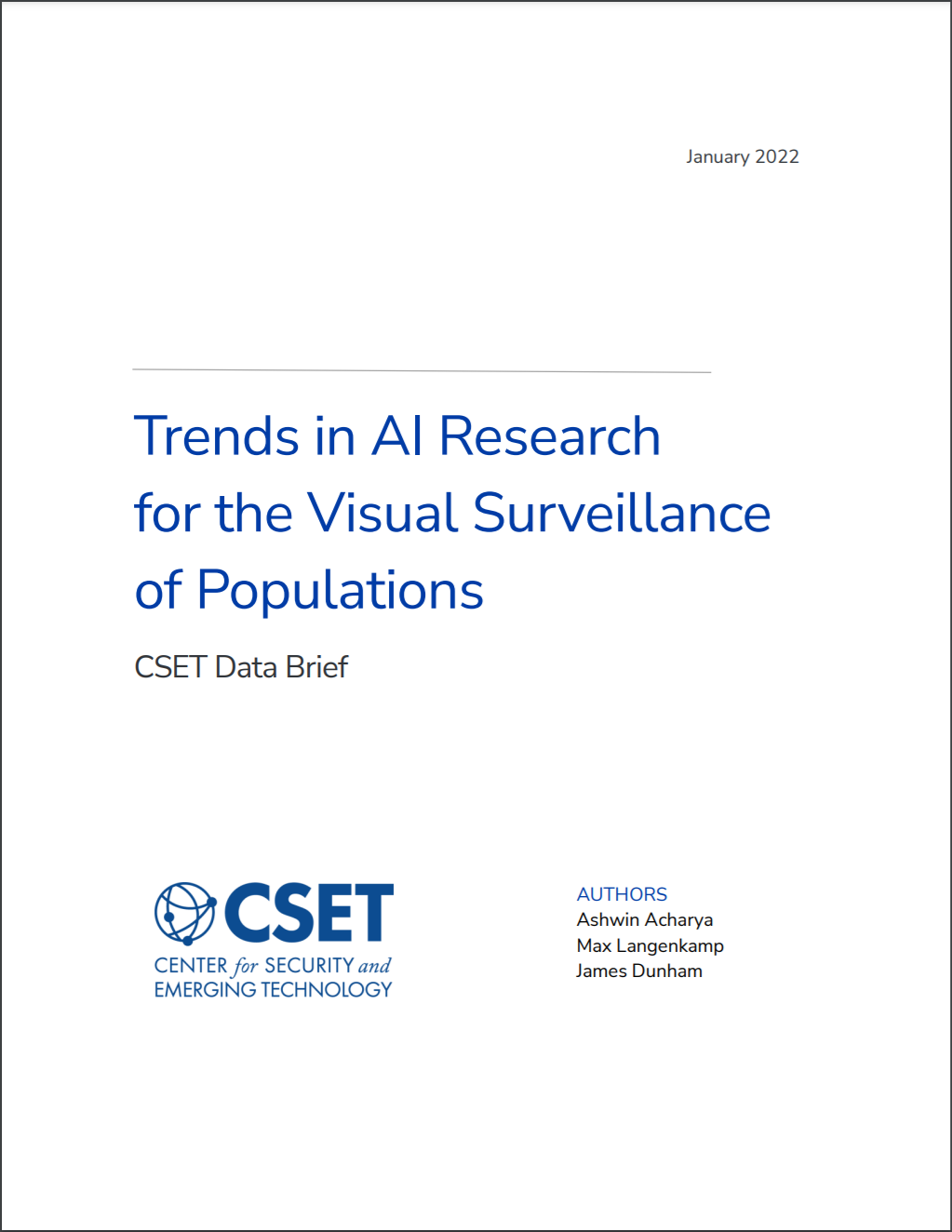Executive Summary
Since 2014, computer vision models have dramatically improved their performance on benchmarks for image classification, image generation, facial recognition, and other tasks.1 As these examples show, computer vision researchers aim to solve a wide variety of problems. Yet previous bibliometric studies have examined international output of computer vision research as a whole, without distinguishing among these many research tasks. In principle, analyses of academic research can inform us about the global growth of research and the interests and incentives of each nation’s researchers. But only a small segment of computer vision research may relate to any particular area of interest. In this brief, we focus on “visual surveillance research,” the development of algorithms such as facial recognition that could be used to surveil individuals or groups.2
These algorithms are often applied for benign, commercial uses, such as tagging individuals in social media photos. But progress in computer vision could also empower some governments to use surveillance technology for repressive purposes.
Using a dataset of English-language papers published between 2015 and 2019, we applied natural language processing methods to identify the computer vision papers in this corpus and the research tasks they described.3 We found:
- Papers relevant to visual surveillance accounted for less than 10 percent of all computer vision research. This proportion was fairly consistent across geographic regions and time, varying from about 5 percent to 8 percent. In China, for example, we estimate that 6 percent of computer vision research papers were focused on visual surveillance tasks in both 2015 and 2019. The most common tasks in computer vision research are general-purpose ones that could improve performance in a wide variety of application areas.
- Researchers with Chinese institutional affiliations were responsible for more than one third of publications in both computer vision and visual surveillance research. This makes China by far the most prolific country in both areas. Chinese researchers’ share of global visual surveillance research is growing at a similar rate to their share of computer vision research.
- China produces a disproportionate share of research on three “emerging” surveillance tasks—those where worldwide publication counts grew at over 30 percent annually. Chinese researchers are responsible for a large share of publications in person re-identification, crowd counting, and facial spoofing detection, and their share of publications in these areas is growing.
These conclusions derive from English-language research publications only. Further work could extend our task-extraction methodology to non-English publications, which would improve our estimates of international research output and would likely increase non-Anglophone countries’ estimated share of global surveillance research. Future projects could also augment our bibliometric approach by including more direct indicators of nations’ capabilities and interests in deploying surveillance technology, such as patent data, private research and development, camera deployment, and relevant government policies.
Download Full Report
Trends in AI Research for the Visual Surveillance of Populations- Daniel Zhang et al., “Artificial Intelligence Index Report 2021” (Stanford University Center on Human-Centered Artificial Intelligence, 2021), https://aiindex.stanford.edu/wp-content/uploads/2021/03/2021-AI-Index-Report_Master.pdf.
- As a result of this focus, we chose not to include some search terms that are related to surveillance more broadly, and not just the visual surveillance of human populations, such as “video surveillance.” See Appendix A for more discussion on the selection of search terms.
- See James Dunham, Jennifer Melot, and Dewey Murdick, “Identifying the Development and Application of Artificial Intelligence in Scientific Text,” arXiv preprint, arXiv:2002.07143 (2020), https://arxiv.org/abs/2002.07143; for information on SciREX, see Sarthak Jain, Madeleine van Zuylen, Hannaneh Hajishirzi, and Iz Beltagy, “SciREX: A Challenge Dataset for Document-Level Information Extraction,” arXiv preprint, arXiv:2005.00512 (2020), https://arxiv.org/abs/2005.00512.
